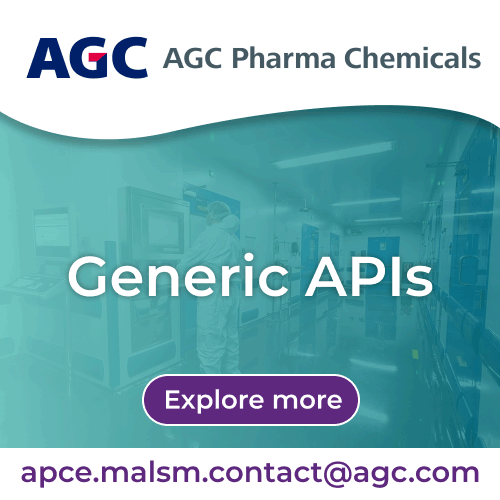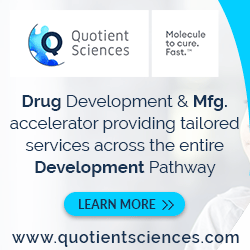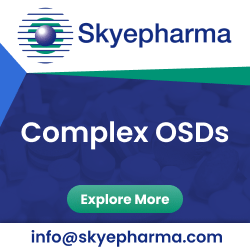Overview of API contract manufacturing services offered by contract manufacturers (CMO, CDMO) for beta-lactams, small molecule APIs, etc
Q1. What is an antibiotic API?
Antibiotic active pharmaceutical ingredients (APIs) are examples of biochemical drugs generally produced by the fermentation of microorganisms. Furthermore, various semi-synthetic antibiotic active pharmaceutical ingredients (APIs) that have appeared in recent years are products that combine biosynthesis and chemical synthesis.
Antibiotics are substances that destroy or inhibit the growth of other pathogenic microorganisms and are used in the treatment of external or internal infections. While some antibiotics are produced by microorganisms, most are now manufactured synthetically.
Antibiotics are specific for the type of bacteria being treated and, in general, cannot be interchanged from one infection to another.
Active Pharmaceutical Ingredients (APIs) based on its sources can be divided into two major categories, including chemical synthetic drugs and natural chemical drugs. As seen above, antibiotic active pharmaceutical ingredients (APIs) fall under the natural chemical drugs category.
The increasing consumption of antibiotics has been fuelling the demand for antibiotic APIs across the world and India exhibits the highest human antibiotic consumption in the world.
However, antimicrobial resistance (AMR) is a growing public health issue and needs urgent attention in countries around the world. AMR happens when microorganisms change and are still able to grow, even when they are exposed to antimicrobial medicines such as antibiotics. Antibiotic resistance occurs naturally, but misuse of antibiotics in humans and animals is accelerating the process.
Q2. What are the different types of antibiotic APIs?
Some Types of Antibiotic APIs
Beta Lactam Antibiotics
Beta-Lactams are characterized by four-membered, nitrogen-containing beta-lactam rings at the core of their structure, which is key to the mode of action of this group of antibiotics. Beta lactam antibiotics target penicillin-binding proteins, a group of enzymes found anchored in the cell membrane, which are involved in the cross-linking of the bacterial cell wall.
Beta-Lactams, a broad class of antibiotics that include penicillin derivatives, amoxicillin and ampicillin, would taint other products and therefore requires dedicated manufacturing, processing and primary packing, both at the API and final formulations level.
Some Types of Beta Lactam Antibiotics
- Penicillins
The first penicillin gave rise to an entire class of antibiotics known as penicillins. Penicillins are derived from a specific mold (a type of fungi)—Penicillium. The penicillin class contains five groups of antibiotics: aminopenicillins, antipseudomonal penicillins, beta-lactamase inhibitors, natural penicillins, and the penicillinase resistant penicillins.
A bactericidal antibiotic, such as penicillin, kills bacteria. These drugs usually interfere with either the formation of the bacterial cell wall or its cell contents.
- Monobactams
Monobactam antibiotics are a class of antibiotics that have a monocyclic beta lactam nucleus and are structurally different from other beta-lactams.
Monobactam antibiotics are synthetic compounds, although monocyclic beta-lactam compounds have been found in nature in various soil bacteria. Although additional orally and parenterally administered monobactam antibiotics are under investigation, the first marketed monobactam was aztreonam.
- Cephalosporins
Cephalosporin antibiotics are bactericidal against most gram-positive cocci and gram-negative bacilli of clinical importance. They are relatively nontoxic but like penicillins may cause hypersensitivity reactions.
Cephalosporins, such as cephalexin, are used to treat a wide range of infections, but some are also effective for treating more serious infections, such as septicaemia and meningitis.
Some Types of Non-Beta Lactam Antibiotics
- Macrolide Antibiotics
Macrolide antibiotics (such as erythromycin and clarithromycin) – can be particularly useful for treating lung and chest infections, or as an alternative for people with a penicillin allergy, or to treat penicillin-resistant strains of bacteria.
Macrolides inhibit the growth of bacteria and are often prescribed to treat rather common bacterial infections. The popularity of macrolide antibiotics is largely due to their spectrum of activity and their relative safety.
- Lincosamide Antibiotics
Lincosamides in clinical use include lincomycin and clindamycin, but lincomycin is no longer widely available. Both lincosamides are active against gram-positive aerobic and many anaerobic bacteria. However, for anti-anaerobic activity, clindamycin is superior to lincomycin.
Although not related structurally to macrolides, lincosamides have similar antimicrobial activity and act at the same site on the bacterial ribosome to suppress protein synthesis.
Q3. What are the steps involved in antibiotics development and manufacturing?
Antibiotics Manufacturing & Development Steps
Step 1: Antibiotics Development
During the development stage, thousands of microorganism species are screened for any sign of antibacterial action. When one is found, the species is tested against a variety of known infectious bacteria. If the results are promising, the organism is grown on a large scale so the compound responsible for the antibiotic effect can be isolated.
Step 2: Fermentation
Anaerobic biochemical reactions in which an enzyme (or several enzymes produced by a microorganism) catalyses the conversion of one substance into another; especially the conversion (using yeast) of sugars to alcohol or acetic acid with the evolution of carbon dioxide.
The fermentation process may take a few days to obtain an extractable amount of product. Oxygen transport is the major concern; therefore, sufficient polymeric sugar and protein with a trace amount of elemental growth factors are used to enhance production.
Fundamentally, the fermentation broth is the sea of nutrients in which the microorganisms grow, reproduce and swim. The fermentation broth supplies the microorganisms with all the nutrients the microorganisms need to grow and produce the various fermentation products.
Step 3: Isolation and Purification
After 3 to 5 days, the maximum amount of antibiotics will have been produced and the isolation process can begin. Isolation depends on the specific antibiotic produced, and the fermentation broth is processed by various purification methods.
For water soluble antibiotics, the ion-exchange method is used for purification. Conversely, solvent extraction is used for the isolation of oil soluble or organic antibiotics. Filtration, precipitation, and other separation methods may also be used by various CDMOs offering antibiotic API contract manufacturing. After purification extensive pharmacology and toxicology steps may be performed to test the antibiotics' effect on the normal functioning of tissues.
Step 4: Refining and Packaging
Antibiotic products can take on many different dosage forms. Depending on the final form of the antibiotic, various refining steps may be taken after initial isolation. For antibiotics packaged in intravenous bags, crystalline antibiotics are dissolved in solutions and sealed hermetically.
For gel capsules, powdered antibiotics are physically sealed into the bottom half of a capsule and the top half is mechanically put in place. On the other hand, for topical ointments the antibiotic is mixed into the ointment.
Q4. Which are the leading contract manufacturers offering antibiotic APIs?
Choosing an API contract manufacturing partner is one of the big decisions you’ll make before your drug reaches the market, and you need to ensure your API manufacturer can provide the right API at the right strength and quality for your project.
Some of the leading companies operating in the market are launching new sequencing products and expanding the product portfolio, which is expected to indirectly increase the revenue of antibiotic API producers.
There are various CDMOs offering contract manufacturing for APIs (antibiotic API contract manufacturing), fine chemicals, small molecule APIs, etc. Some of them and the services they provide are noted below.
AbbVie Contract Manufacturing - Contract Manufacturing for Antibiotic APIs
AbbVie Contract Manufacturing offers a wide range of compendial-grade Active Pharmaceutical Ingredients (APIs) from fine chemicals to antibiotics, including topical analgesics, lincosamide and macrolide antibiotics. It offers bulk API contract manufacturing services including antibiotic API contract manufacturing.
AbbVie Contract Manufacturing’s global network of state-of-the-art facilities can meet your needs at every stage of the API manufacturing, development, and scale-up process.
Fresenius Kabi Austria - Contract Manufacturing for Antibiotic APIs - Oral and Sterile Grades
Fresenius Kabi Anti-Infectives is a part of the Fresenius Kabi group, it specializes in the full-service cGMP API contract manufacturing of beta-lactam antibiotics (beta-lactam antibiotic API manufacturing), both oral and sterile grades.
Fresenius Kabi Anti-Infectives has almost 40-years of experience in cGMP manufacturing sterile and oral grade beta-lactam antibiotics API. They offer customers extensive technical, development and regulatory services supported by project management structure.
Orchid Chemicals and Pharmaceuticals Ltd - Contract Manufacturing for Antibiotic APIs (Cephalosporin APIs)
Orchid's API manufacturing plant specialises in the full-service manufacturing for cephalosporin Active Pharmaceutical Ingredients (APIs). Their manufacturing complex has been successfully audited by leading global regulatory agencies like the US FDA, UK MHRA, GMP, EDQM, etc.
Their API manufacturing plant located at Alathur, south of Chennai, is one of the largest integrated antibiotic manufacturing complexes in India and specialises in bulk API contract manufacturing and the manufacturing of cephalosporin Active Pharmaceutical Ingredients (APIs).
Polfa Tarchomin S.A - API Synthesis and Contract Manufacturing for Antibiotic APIs
Polfa Tarchomin S.A. possesses 3 technological lines for the synthesis of various products including antibiotics. They offer filling of powders or granules containing non-penicillin or non-cephalosporin antibiotics for 30 - 200 ml bottles.
Their analytical capabilities include the determination of biological activity and consistency of both Active Pharmaceutical Ingredients (APIs) and antibiotic medicinal products.
Carbogen Amcis AG - Non-beta-lactam Antibiotics Manufacturing or Contract Manufacturing for Antibiotic APIs
Since 2000, Carbogen Amcis SAS has manufactured over 300 GMP batches of APIs such as highly potents, cytotoxics, proteins, mAbs, peptides, enzyme inhibitors and antibiotics (non-beta-lactams) and vaccines (non-life) along with fine chemicals, small molecule APIs, etc. It therefore offers bulk API contract manufacturing services.
They have a full-service suite of formulation and process development capabilities for parenteral forms; small molecule APIs, cytotoxics, proteins, peptides, enzyme inhibitors, antibiotics (non beta lactam), vaccines (non-live), mAbs and antibody drug conjugates (ADC).
All Suppliers

















 Bioquim: An European GMP-certified company manufacturing bulk APIs, specializing in sterile lyophilization and chemical synthesis.
Bioquim: An European GMP-certified company manufacturing bulk APIs, specializing in sterile lyophilization and chemical synthesis.






